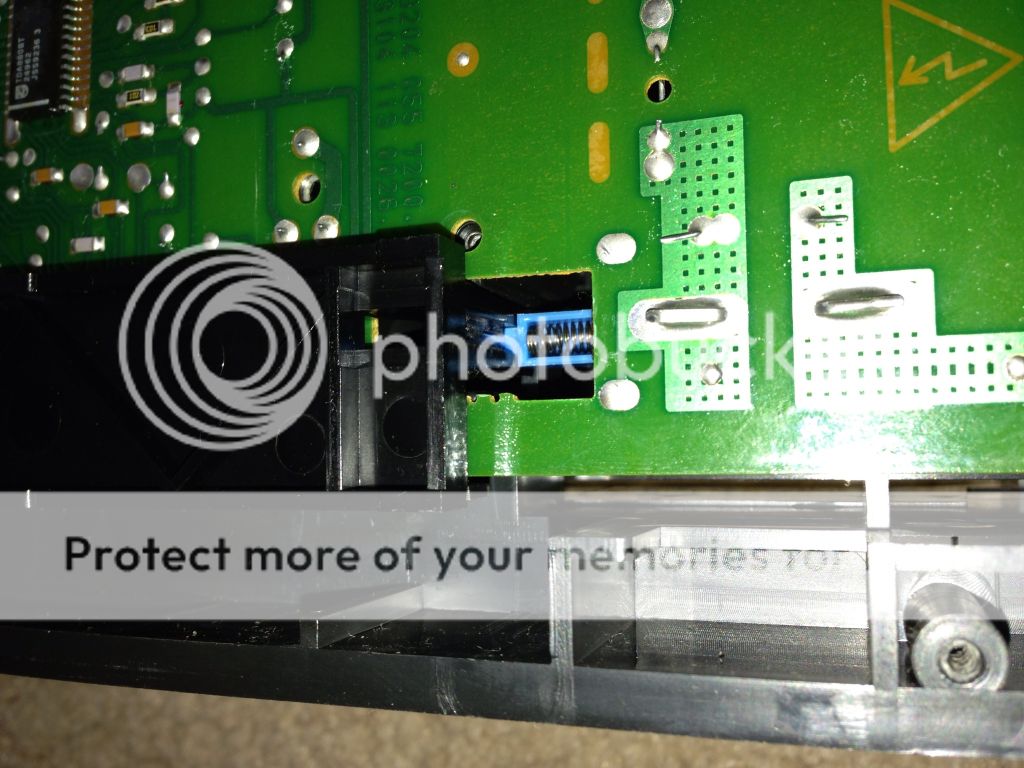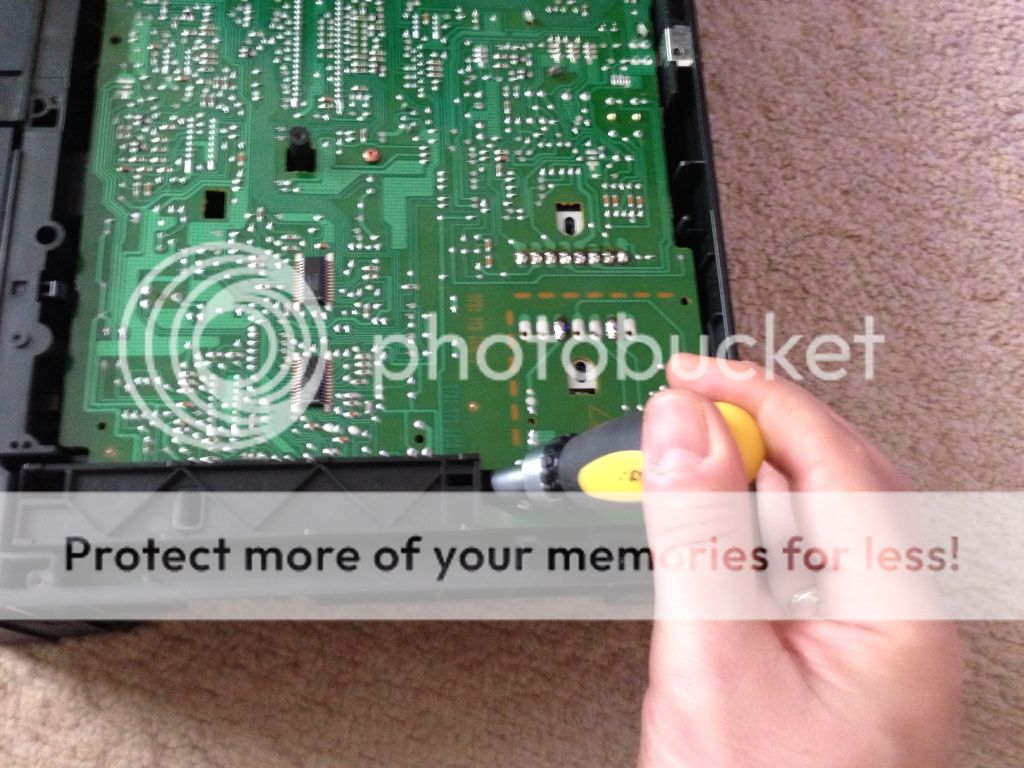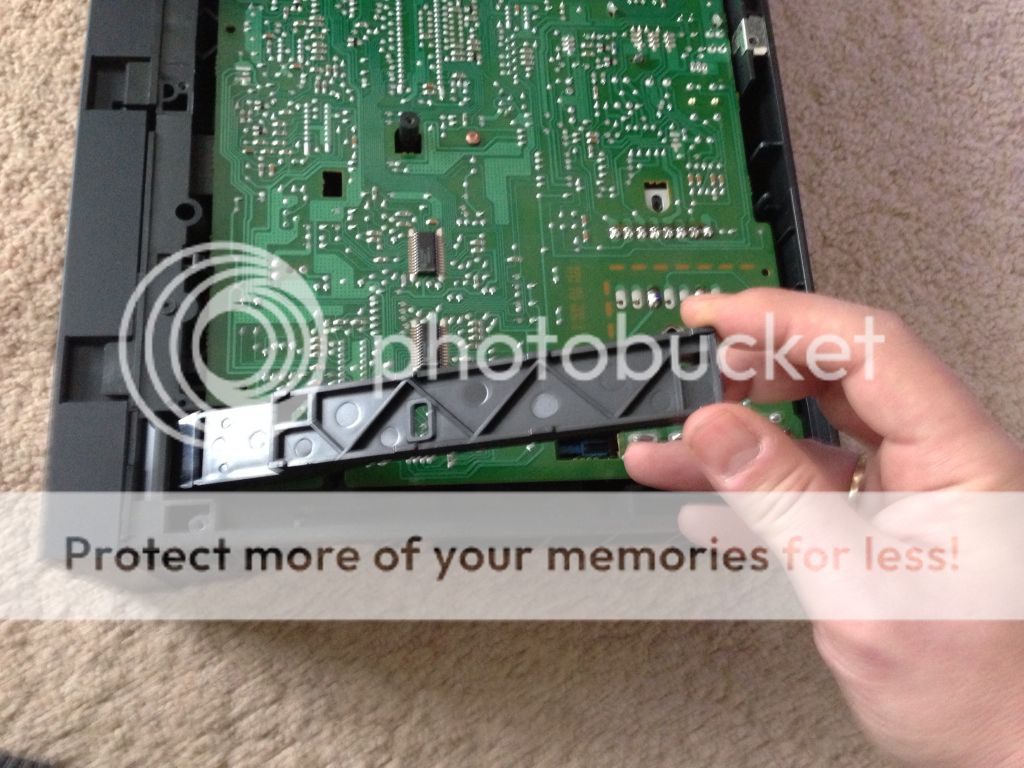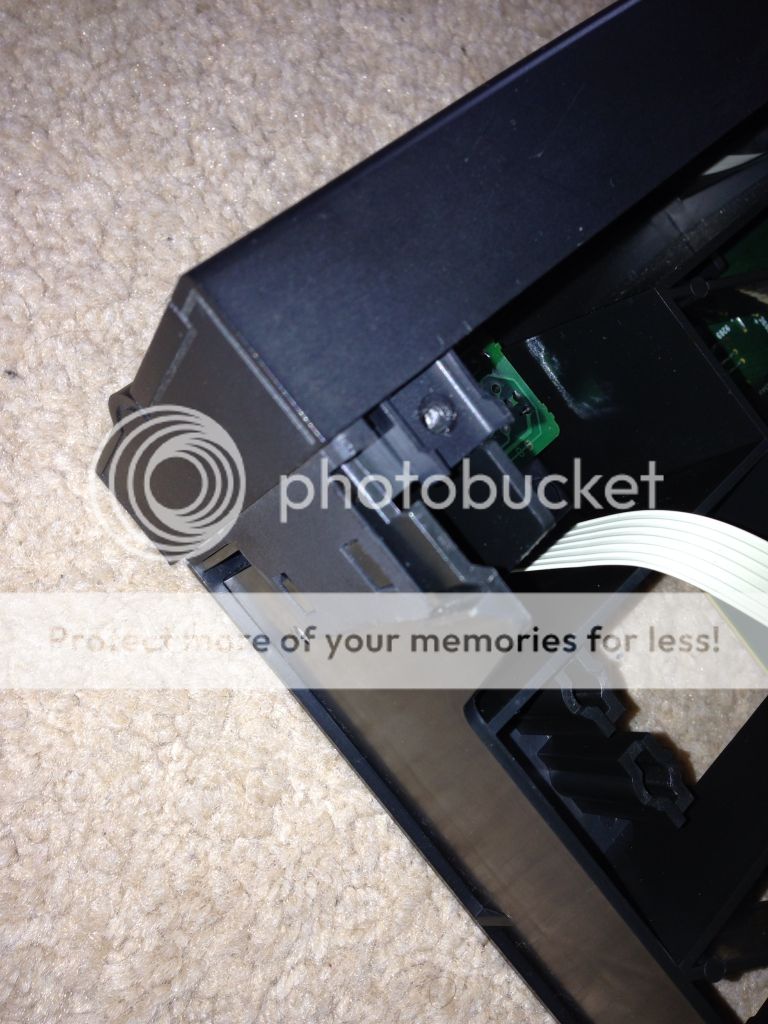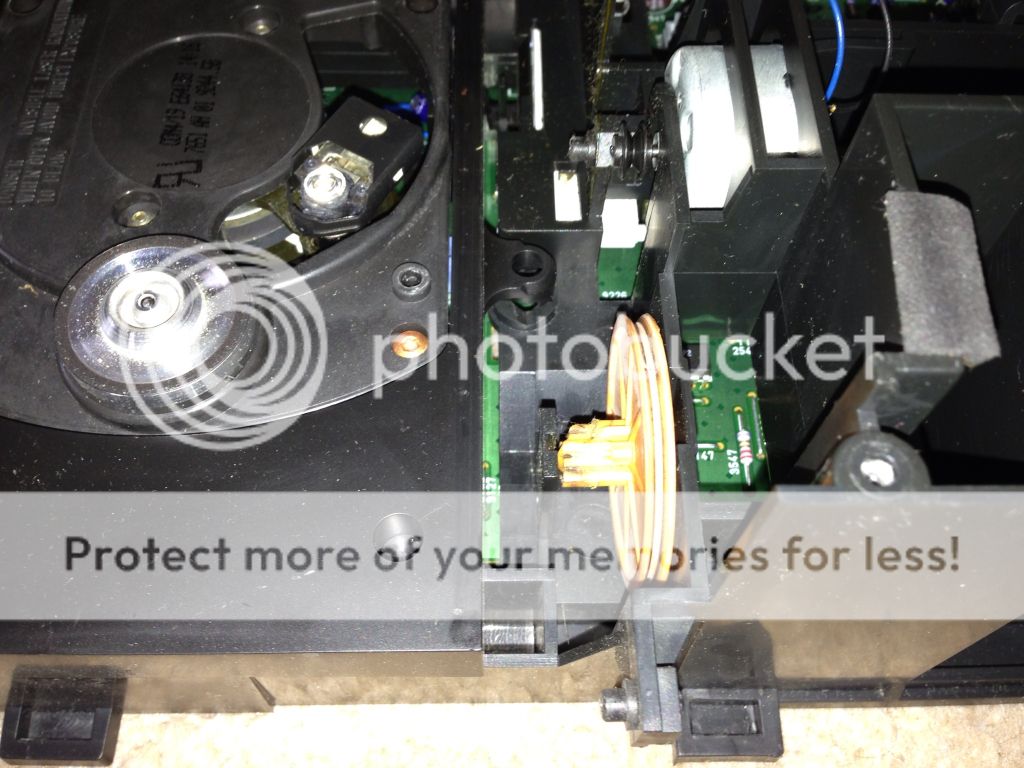OK Now to get the main board out ready for some pre mod investigation.
From the top, we need to disconnect the loading motor.

From the back, there are torx screw to undo by the output phono's in the middle and by the mains socket. From the bottom there are torx screw in the PCB and 2 larger black cross heads either side of the transformer to remove. Once these are out there are 2 tabs to press to allow to board to move out. Press the tabs to start the board moving but only move it enough to ensure its mechanically free. There is still a cable to the spin motor and ribbon the laser to disconnect.
This picture shows 1 of the tabs.
When the board is free, we need to locate the ribbon. You can access the ribbon from the side. The white collar on the plug needs to lift away from the the PCB to release the cable. Its a bit of a fiddle the 1st time you try to do it. Be very careful not to pull on ribbon until the collar releases or you could damage it. Its very fragile! Once release you need to access the spin motor connector from the front. Its got a tab on the PCB side that needs pressing to release the plug.

With both of these released, the board will come out of the player and leave you with this

I would now put all the mechanical bits back together for safe keeping.
You will notice a white mech under the transport. This will just fall out. Make sure you dont loose it because its part of the drawer proximity mechanism!
I've now got the main PCB out. The first thing I noticed is that the transformer runs warm. This suggests to me that its working quite hard. This is a sure sign that things can be improved with bigger transformers. I've yet to decide if I'll take this route due to the likely value of the player after some mods.
Now we can start to identify components and possible upgrades!






